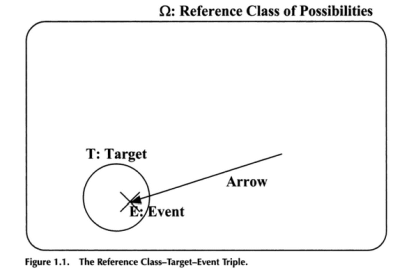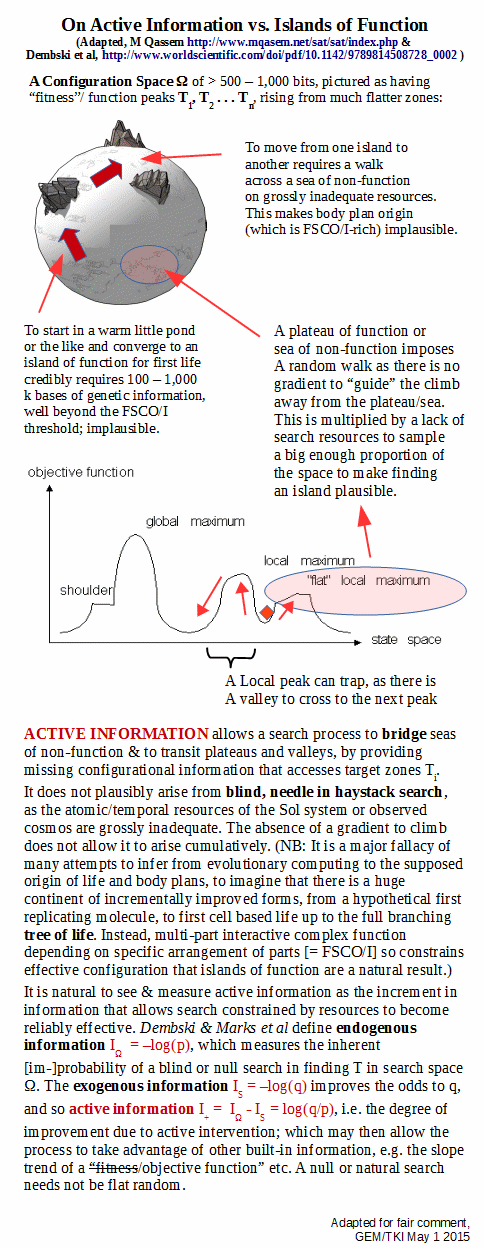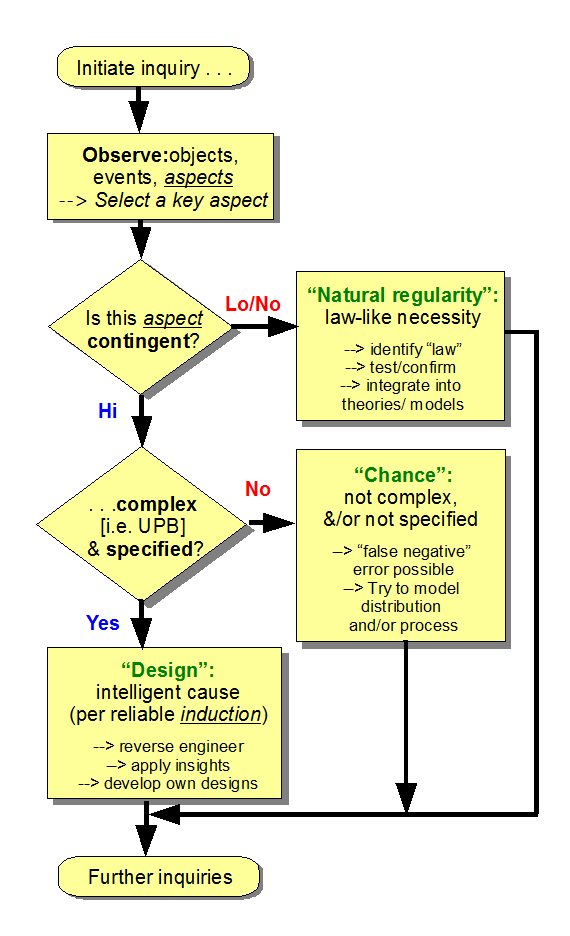As was recently discussed, contrary to objections being made, the concept of blind search and linked search challenge in a configuration or state space is a reasonable and even recognised concept. As we explore this concept a little more, an illustration may be helpful:
 With this in mind, we may again look at Dembski’s arrow and target illustration from NFL, p. 11:
With this in mind, we may again look at Dembski’s arrow and target illustration from NFL, p. 11:

Now, let us ponder again Wiki on state space search:
>>State space search is a process used in the field of computer science, including artificial intelligence (AI), in which successive configurations or states of an instance are considered, with the intention of finding a goal state with a desired property.
Problems are often modelled as a state space, a set of states that a problem can be in. The set of states forms a graph where two states are connected if there is an operation that can be performed to transform the first state into the second.
State space search often differs from traditional computer science search methods because the state space is implicit: the typical state space graph is much too large to generate and store in memory. Instead, nodes are generated as they are explored, and typically discarded thereafter. A solution to a combinatorial search instance may consist of the goal state itself, or of a path from some initial state to the goal state.
Representation
[–> Note, I would prefer stating the tuple as say: S := {{Ω, A, Action(s), Result (s,a), Cost(s,a)}} ]
Examples of State-space search algorithms
Uninformed Search
According to Poole and Mackworth, the following are uninformed state-space search methods, meaning that they do not know information about the goal’s location.[1]
Depth-first search
Breadth-first search
Lowest-cost-first searchInformed Search
Some algorithms take into account information about the goal node’s location in the form of a heuristic function[2]. Poole and Mackworth cite the following examples as informed search algorithms:
Heuristic depth-first search
Greedy best-first search
A* search>>
This now allows us to better appreciate the sort of challenge that blind watchmaker search in a darwin’s pond or the like pre-life environment faces, or that of hopping from one body plan to another:
 Thus, we will better appreciate the general point Dembski and Marks et al have been making:
Thus, we will better appreciate the general point Dembski and Marks et al have been making:
>>Needle-in-the-haystack [search] problems look for small targets in large spaces. In such cases, blind search stands no hope of success. Conservation of information dictates any search technique [–> as in not specifically correlated to the structure of the space, i.e. a map of the targets] will work, on average, as well as blind search. Success requires an assisted [intelligently directed, well-informed] search. But whence the assistance required for a search to be successful? To pose the question this way suggests that successful searches do not emerge spontaneously but need themselves to be discovered via a search. The question then naturally arises whether such a higher-level “search for a search” is any easier than the original search.
[–> where once search is taken as implying sample, searches take subsets so the set of possible searches is tantamount to the power set of the original set. For a set of cardinality n, the power set has cardinality 2^n.]>>
In this context, once we notice that we are in fact addressing an entity that is marked by the sort of functionally specific complex organisation and/or information [FSCO/I] that leads to this sort of needle in haystack challenge, the design inference explanatory filter applies:
And yes, yet again, we are back to the point that the origin of life and body plans is best explained on design; intelligently directed configuration by whatever ways and means such could have been achieved.
Further food for thought. END

